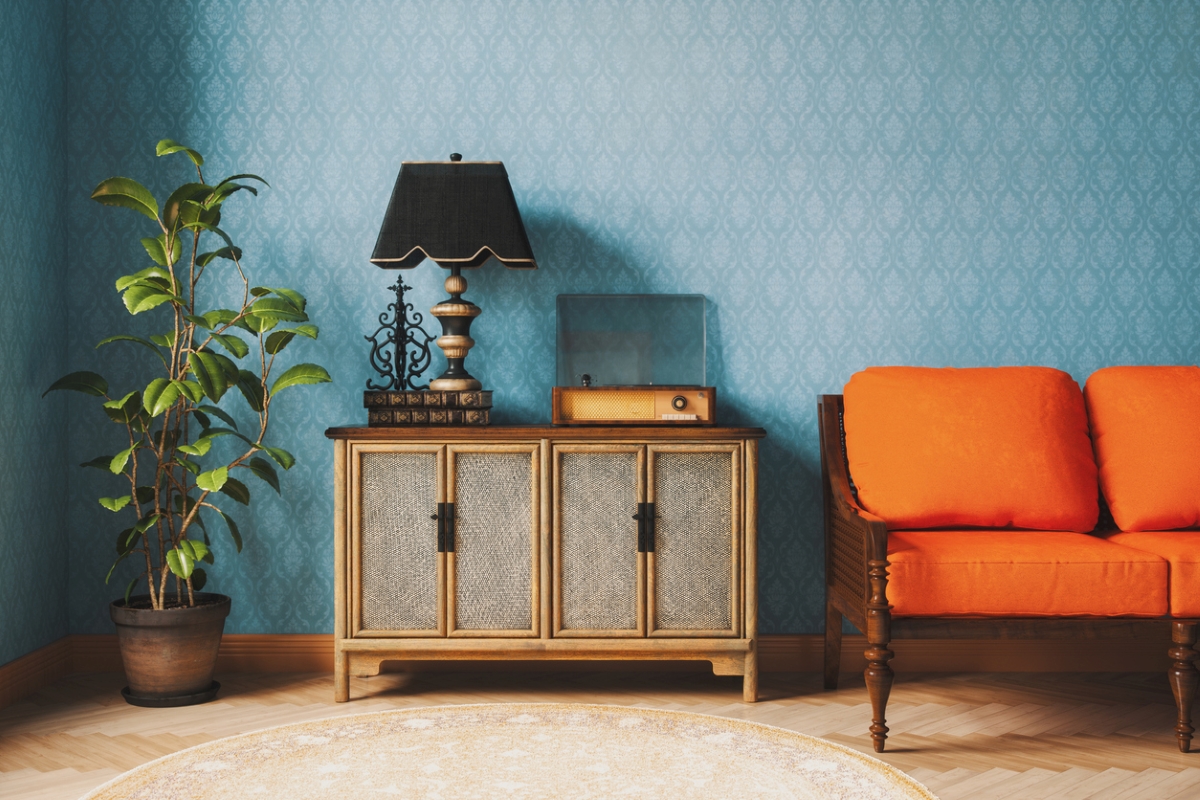We may earn revenue from the products available on this page and participate in affiliate programs. Learn More ›
Say Goodbye to Your 1980s Decor
Whether or not you want to believe it, the 1980s now belong to a bygone era—though your home may still bear the hallmark of the decade’s distinctive design trends. If this is the case, your dwelling is overdue for a more contemporary makeover.
We’ve assembled a list of outdated design trends from the ‘80s that you can rejuvenate yourself or with the help of a contractor. From simple touches like a fresh coat of paint to more intricate design transformations, the beauty of these updates is that they can be tailored to your budget, schedule, and skills. Here are 12 home features from the 1980s that date your home and how to fix them.
1. Sunken living room
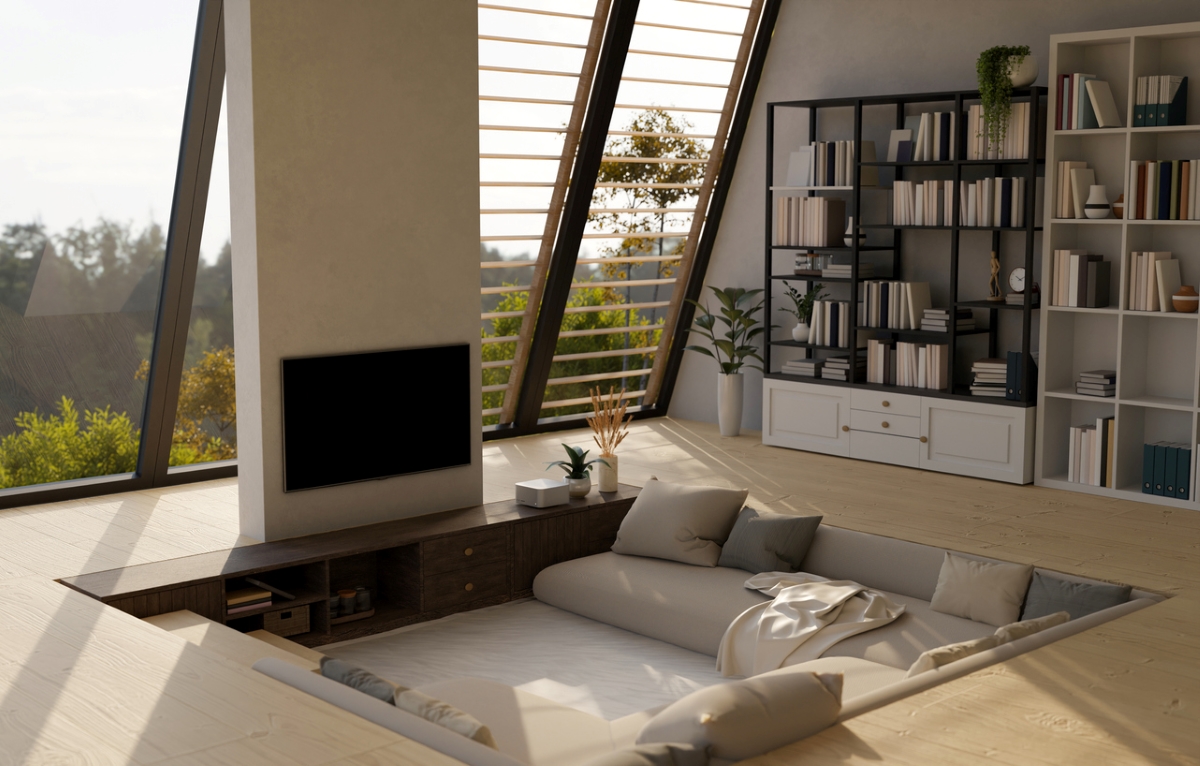
Sunken living rooms used to be a great entertaining space. In these spaces, the living room’s floor level is lower than the rest of the home, with steps leading down into it. They became conversation pits and formal areas for hosting.
Overhaul the design of the space with modern furnishings and decor to make it more contemporary. If it still feels too retro, you can raise the floor to be level with the rest of the home (though it’s costly).
RELATED: 11 Retro Living Rooms Ideas We Almost Forgot About
2. Intercom
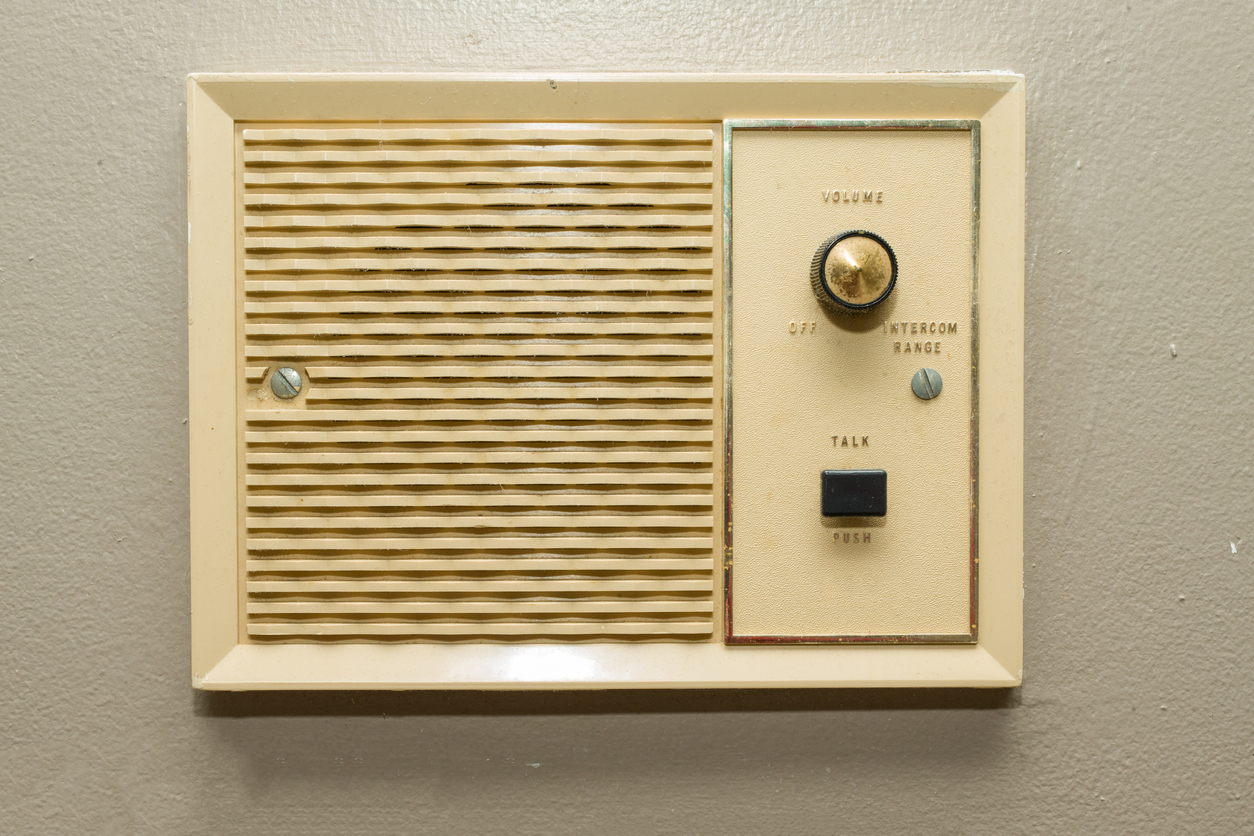
Before smart home systems, intercoms were an excellent way to speak with family members in other areas of the home.
Nostalgia can be entertaining, but if the intercom is out of commission, it’s time to get it out of sight. The simplest way to deal with an antiquated intercom is to cover it with a painting, bookshelf, china hutch, or something else. Otherwise, you can remove it from the wall and fill the holes, making it look like the intercom was never there.
RELATED: 3 Fixes for a Hole in the Wall
3. Veined marble surfaces
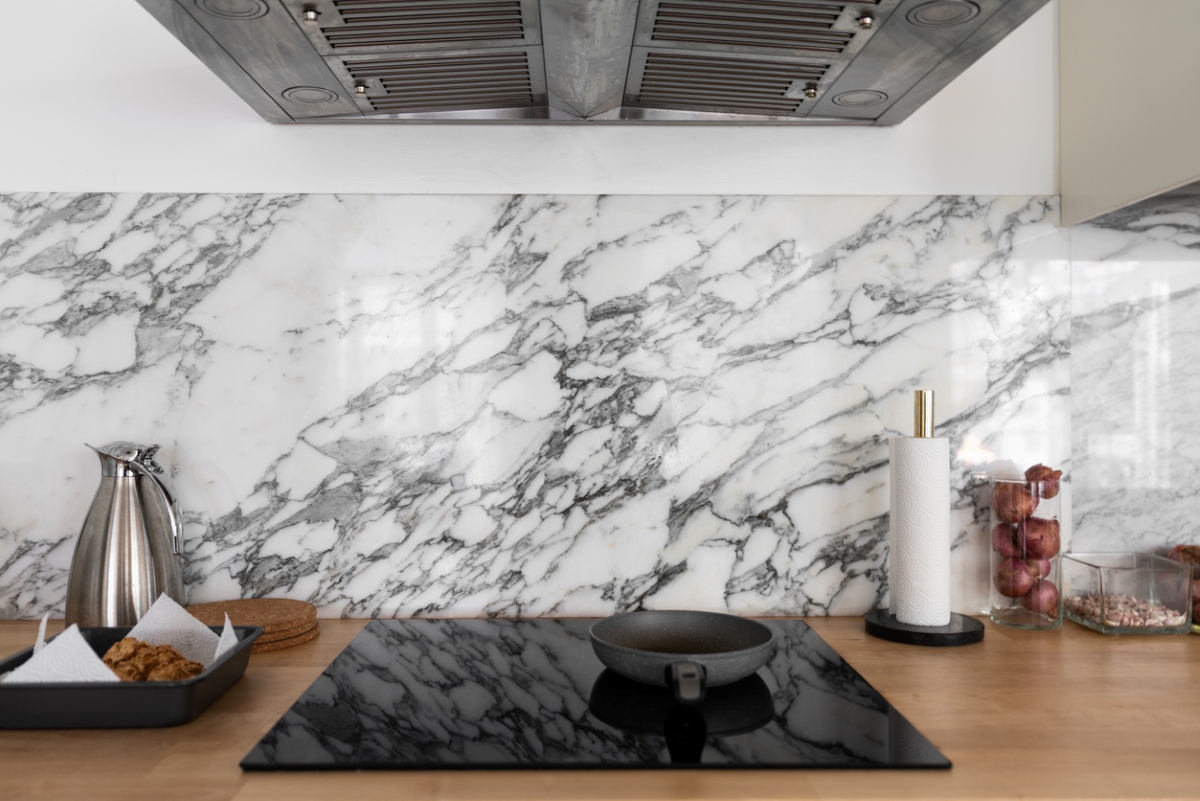
Veined marble surfaces covered walls as permanent decorative accents—usually found in kitchens and furniture pieces. Though some still find these surfaces beautiful, they can age a home’s aesthetic.
To cover the veined marble surfaces cheaply, apply a paint—like epoxy—that will adhere to the marble. You may remove the marble entirely, but it will be a more costly fix, and the adhesive may leave some damage behind.
RELATED: 17 Vintage Kitchen Features We Refuse to Abandon
4. Mirrored closet doors
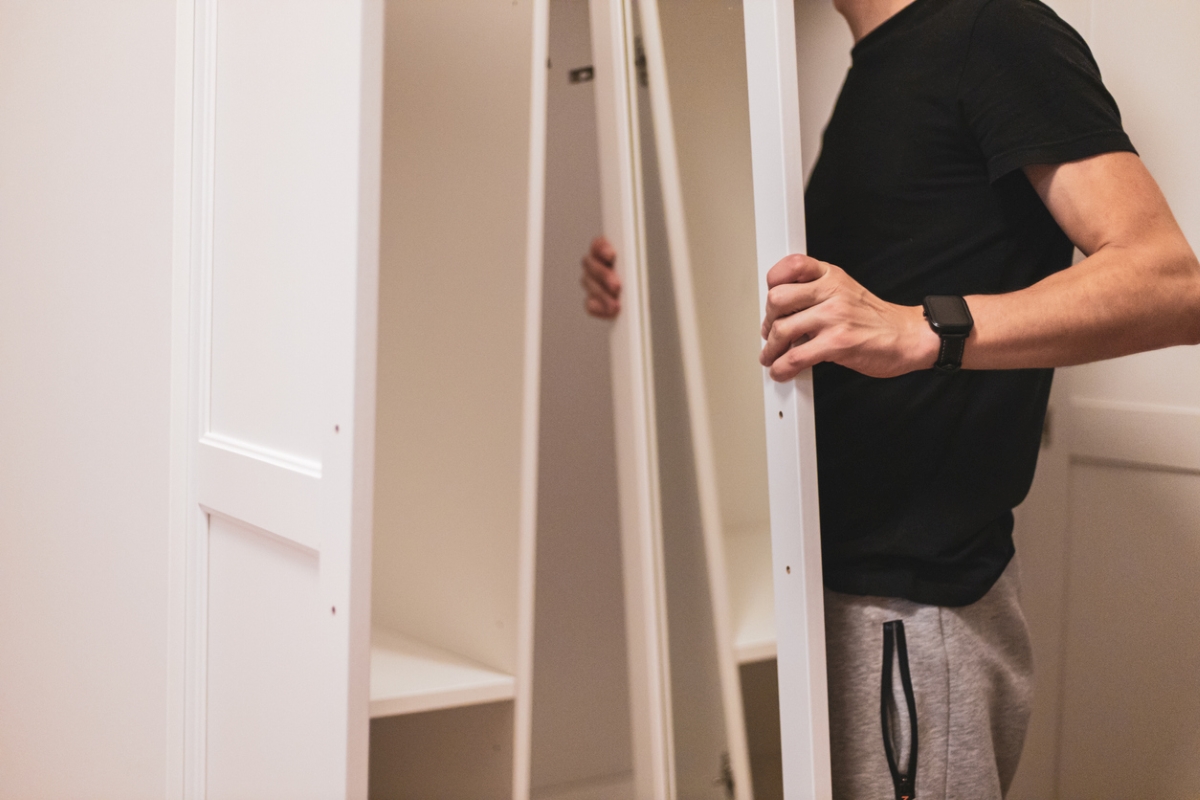
Mirrored closet doors are helpful if you have limited space for a full-length mirror, but they can situate your home’s style in the era of Members Only jackets.
Thankfully, changing the doors is relatively simple, and it often takes a couple of hours and minimal tools. Installing a simple bifold door creates an evergreen aesthetic. If you’re more crafty than handy, cover the mirror with vinyl—a solid color or a bespoke design.
RELATED: 13 Ways Decorating With Mirrors Can Transform Your Space
5. Wood paneling
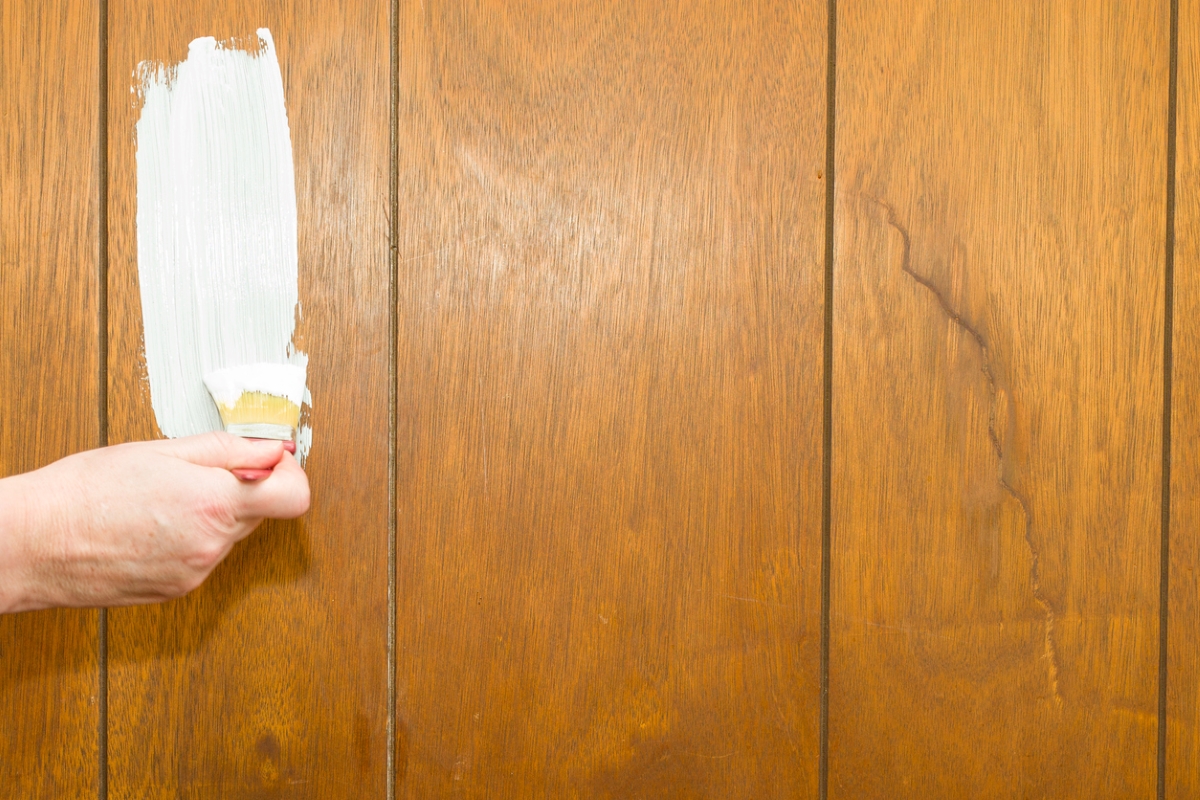
Wood paneling can make a home seem dark and uninviting. Thankfully, it’s easy to update to transform these panels and brighten your house.
The easiest upgrade is to paint the wood paneling. If you want the panels to disappear, add some drywall compound into the lines and cracks, then sand it smooth once dry.
RELATED: 10 Wall Paneling Ideas That Don’t Look Dated
6. Brightly colored toilets, tubs, and sinks
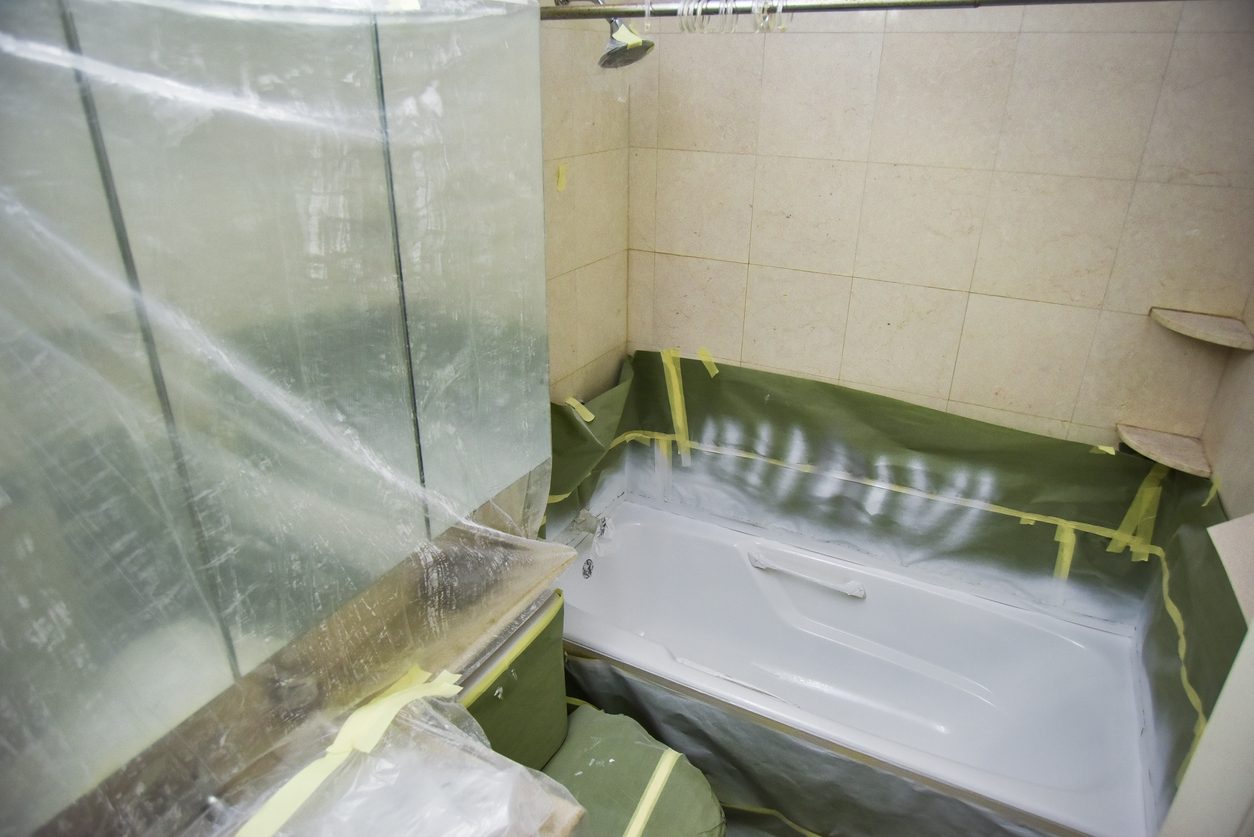
Colorful bathrooms are the calling card of 1980s decor. This decade was notorious for having matching sinks, tubs, and toilets in colors like yellow, pink, green, or blue.
If matching bathroom fixtures are too much of an eyesore, you have some options to fix it. The most cost-effective way is to paint the tub or sink with a paint intended for these fixtures, such as this tub and tile refinishing kit at The Home Depot. Otherwise, replace the colorful fixtures with modern alternatives; hire a contractor if needed.
RELATED: 9 Ways to Make Your Old Bathroom New Again
7. Decorative brickwork
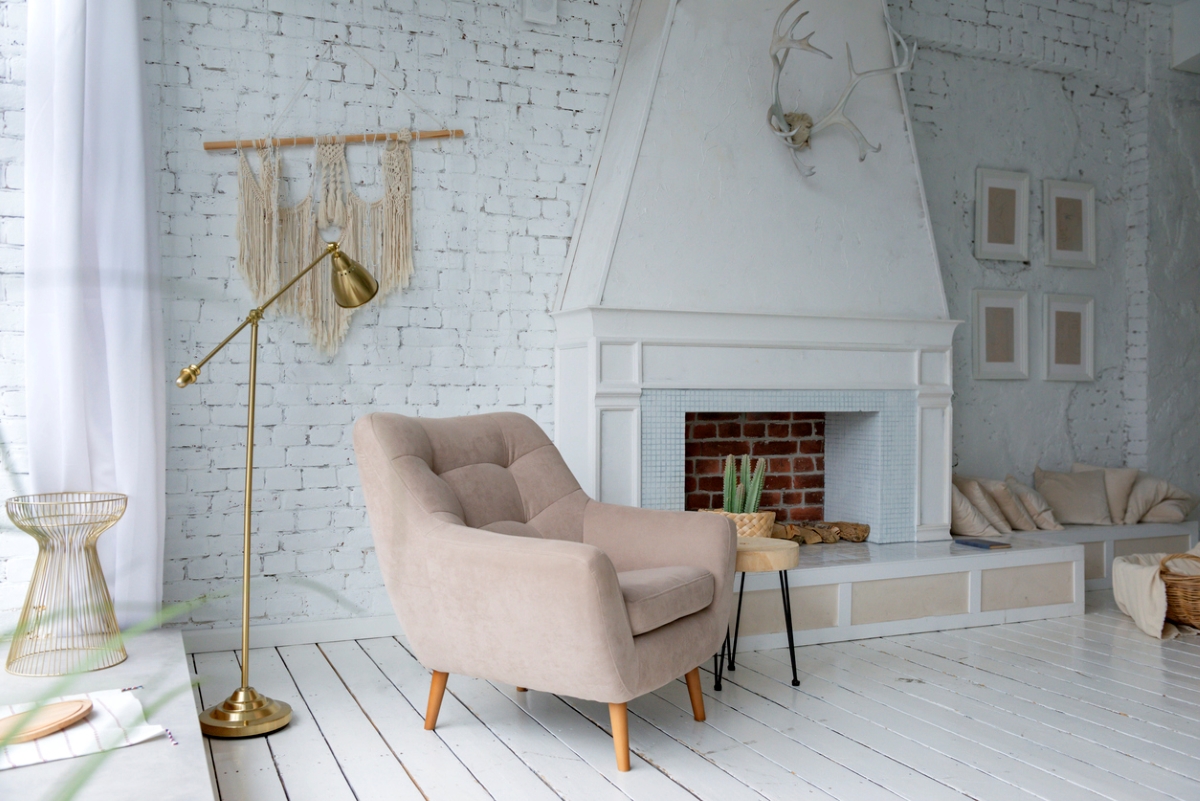
Brickwork is beautiful if done right, but some 1980s brickwork does not stand the test of time. Many homeowners opt to fix this aesthetic by painting over the exposed brick, often with a variation of white. The lighter color brightens the room and lends a modern farmhouse, contemporary, or shabby chic style.
8. Colorful carpets
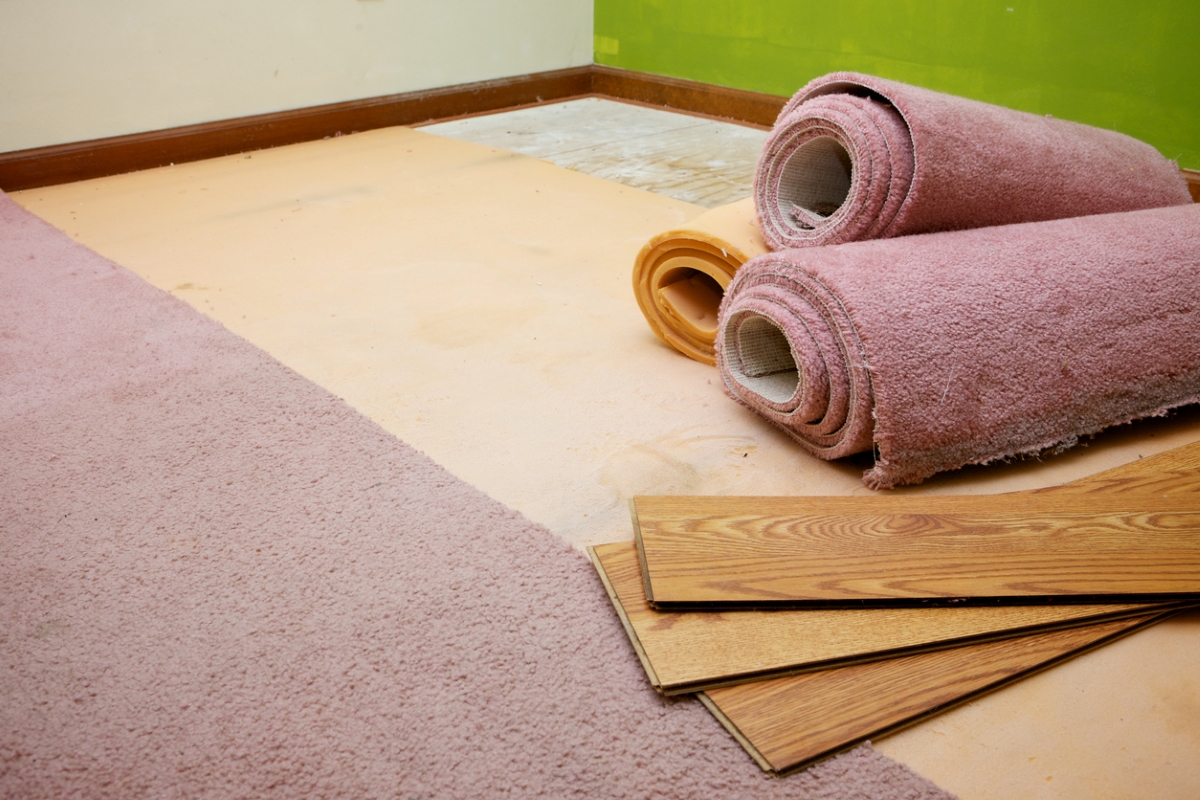
Homeowners in the 1980s loved adding color and visual intrigue to their floors with decade-defining carpets. Many manufacturers recommend replacing your carpet approximately every 10 years; if you have carpet from the ’80s, you’re overdue for a change. Now is the time to remove them and replace it with modern carpet or hard flooring.
RELATED: Carpet vs. Hardwood Cost: 6 Factors to Consider When Choosing Flooring
9. Decorative wallpaper borders

Wallpaper is making a comeback (again); however, the wallpaper borders that adorned your walls in the 1980s have outworn their welcome. We’ve got you covered for the best ways to remove wallpaper—giving you a blank canvas for a style upgrade. You can incorporate a new wallpaper trend, like an accent wall, or paint the walls instead.
10. Louver doors
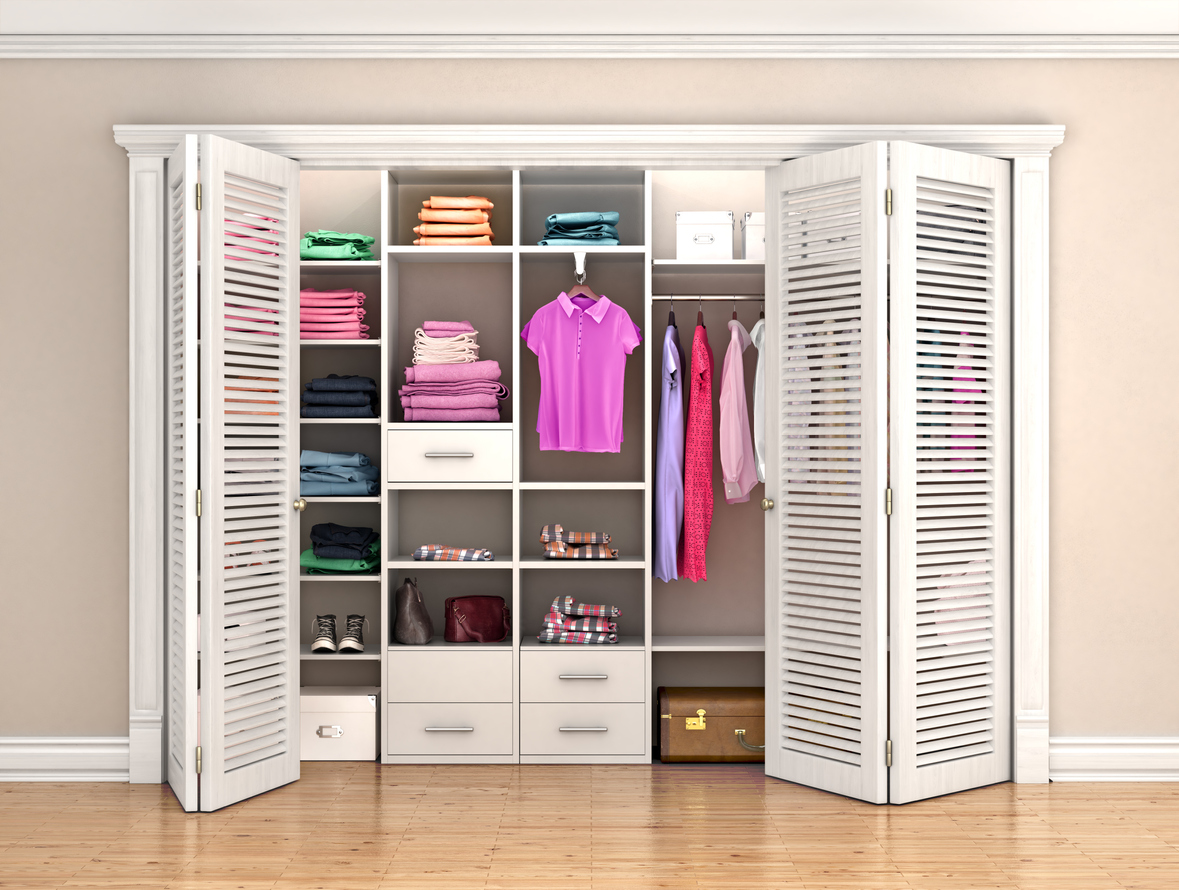
Louver doors are a distinct style known for their built-in horizontal slats, designed for ventilation but which can be a nuisance to keep clean. Depending on their aesthetic, they may make your house look more rustic than modern.
One upgrade option is to paint them with a modern hue, like a blue-green jewel tone. Given the slats, these are a little trickier to paint, so you may opt to replace the doors entirely or cover the slats like Jenna Lafevor from Rain on a Tin Roof.
RELATED: 23 Types of Doors All Homeowners Should Know
11. Metallic finishes
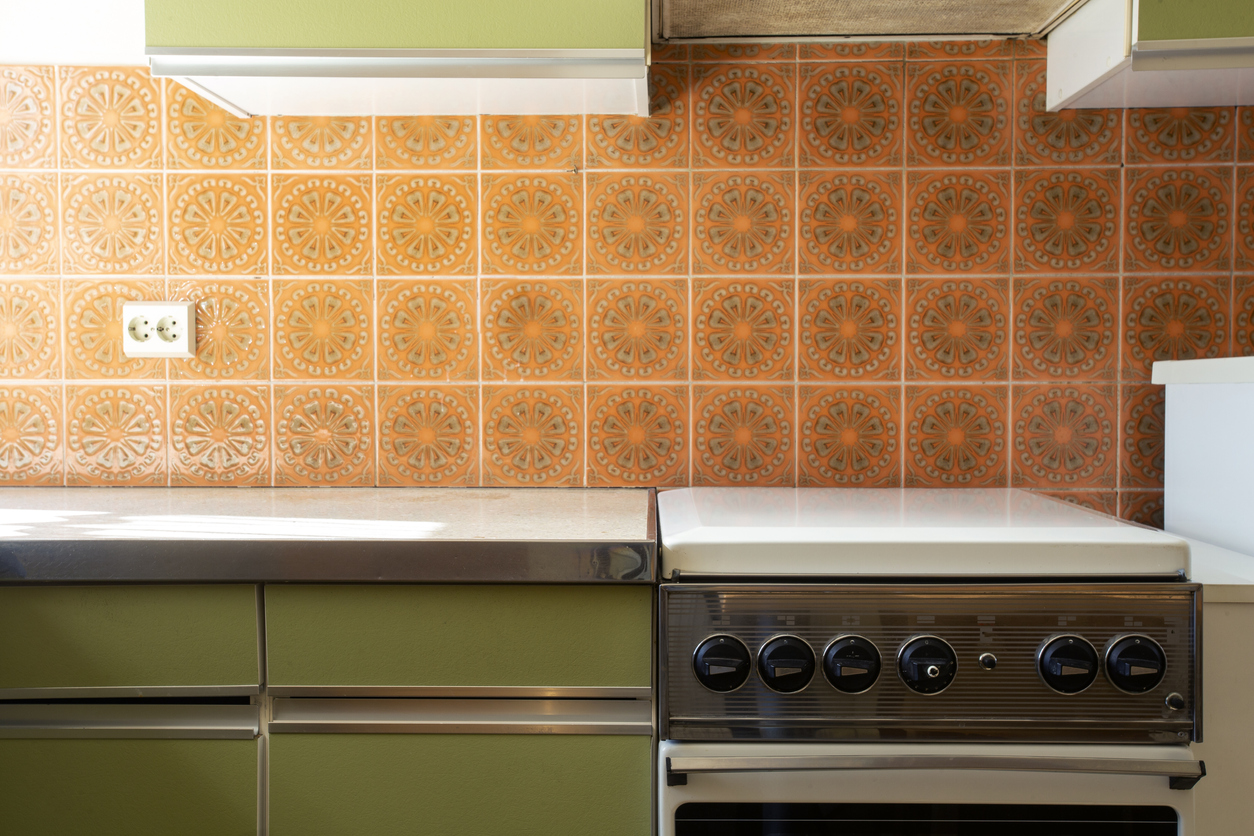
Metallic finishes were quite popular and modern in the 1980s. Now, the metal might be more of an eyesore than an element of futuristic design. Rather than replace every metallic-finished object in your home, a quick and easy fix is to paint the metal using a paint that properly adheres to the metal. Always consider the type of metal you plan to paint, as fireplaces (or other heated metal pieces) will need heat-safe paint.
RELATED: How to Add Gold Finish to Items for a New Look
12. Brass hardware

In the ’80s, brass hardware was everywhere. Kitchens, bathrooms, and bedrooms all used brass. Replacing outdated hardware is one of the simplest DIY activities virtually every homeowner can do. For handles and drawer pulls, you have to unscrew the old ones and replace them with hardware that suits your modern aesthetic. Replacing kitchen or bathroom faucets is slightly more involved than replacing handles, but you can install a faucet by following our tutorial.

